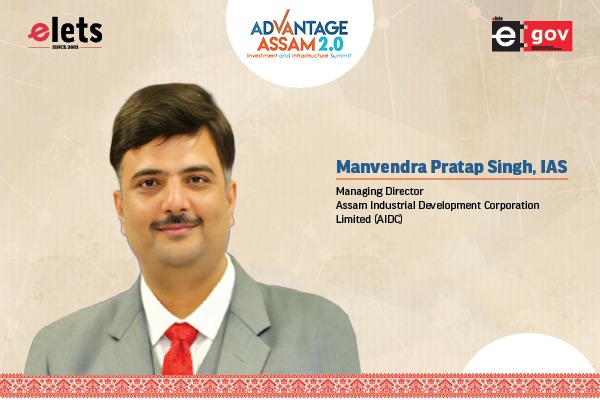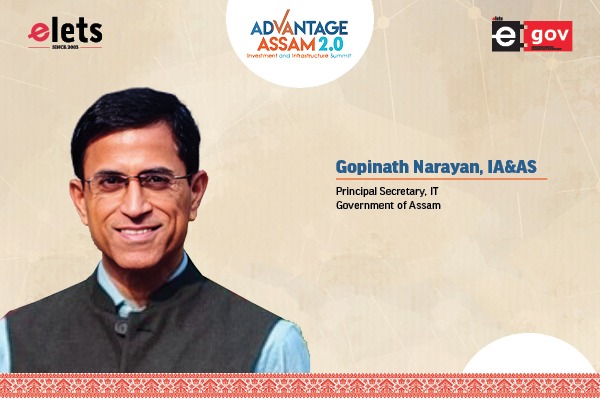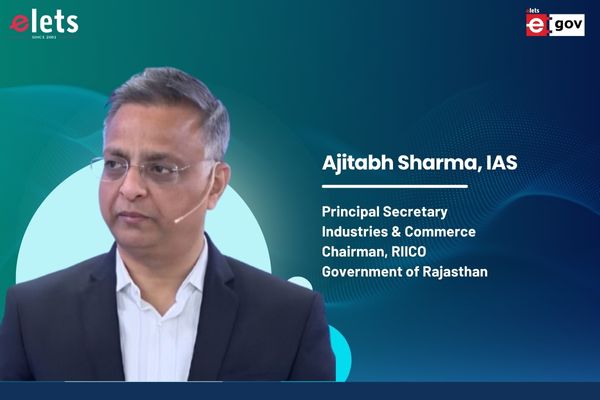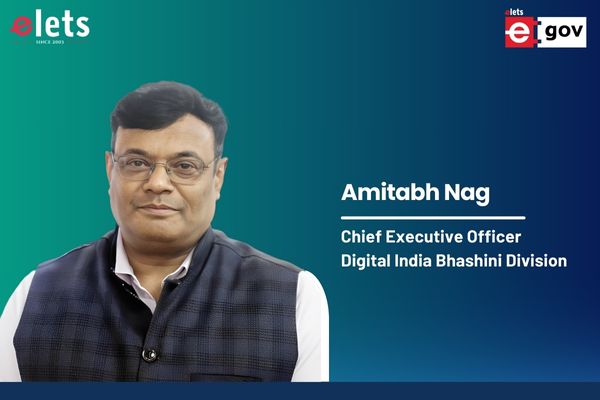 “Motorola in India has been closely involved with the Telecom Industry for over 20 years. Through our Home and Networks Mobility business, we are engaged with customers by offering network solutions to serve any technology path which customers may choose for delivery of wireless broadband services,” says Tarvinder Singh, Head- Marketing and Product Management, Home and Networks Mobility, Motorola India, in conversation with egov magazine
“Motorola in India has been closely involved with the Telecom Industry for over 20 years. Through our Home and Networks Mobility business, we are engaged with customers by offering network solutions to serve any technology path which customers may choose for delivery of wireless broadband services,” says Tarvinder Singh, Head- Marketing and Product Management, Home and Networks Mobility, Motorola India, in conversation with egov magazine
Motorola is the world leader in wireless and broadband communications. How is Motorola set to tap the huge demand for wireless broadband in India?
Motorola is playing a leading role in commercialising WiMAX technology. We are presently engaged in executing over 12 commercial contracts and have in excess of 25 WiMAX trials running worldwide. We see WiMAX as an ideally suited technology for rapid proliferation of affordable broadband services particularly in emreging markets such as India.

Motorola offers a complete WiMAX solution covering the network infrastructure needed in the core and access network, backhaul and a wide variety of fixed, nomadic and mobile end user devices.

Motorola in India has been closely involved with the telecom industry for over 20 years. Through our home and networks mobility business, we are engaged with customers by offering network solutions to serve any technology path which customers may choose for delivery of wireless broadband services. In addition, Motorola mobile devices business provides handsets and other end user devices for delivering the broadband experience to end users regardless of whether an operator is evolving his business from CDMA2000 1X, 2G GSM or planning to build a comprehensive WiMAX network. Motorola also has partnerships with the leading industry players for delivering customised applications and content to enable an Operator’s business case and generate returns from investments made on wireless broadband access.

Motorola globally has been amongst the pioneers in developing solutions based on next generation OFDM/OFDMA (orthogonal frequency division multiple access) technology. We believe our technological capabilities in new wireless technologies coupled with our keen understanding of the Indian market will help position Motorola as a strong contender for new technology wireless rollouts in 3G, WiMAX and LTE (long term evolution) over the years to come.
Please tell us about some of the enterprise mobility solutions of Motorola. How is it helping government and enterprises to integrate, optimise and manage the networks to seamlessly stay connected?

Motorola’s enterprise mobility business addresses the entire spectrum of enterprise mobility needs from the shop fl oor to the corner offi ce, providing workers with access to information out in the fi eld, in the factory, at cash registers, at a patient’s bedside and throughout the supply chain. The end result is seamless information exchange across functions, geographies and devices that allows employees to make more informed decisions, be more productive and gain a competitive edge.
The enterprise mobility business offers a device portfolio ranging from mobile offi ce devices like the Motorola Q to rugged mobile and wearable computers. In this business Motorola is a leader in enterprise wireless infrastructure (WLAN), fi eld network solutions, bar code scanning, radio frequency identifi cation (RFID) solutions and network design and management software, including security applications. A comprehensive mobility management platform enables CIOs and IT leaders to secure and manage mobile devices across the enterprise, delivering a platform to rapidly deploy applications and collaboration tools to increase worker productivity and effi ciency. In India verticals like retail, airlines, airports, railways etc., are currently the users of Motorola enterprise mobility products and solutions.
In addition, Motorola enterprise mobility devices utilises capabilities gained through Motorola’s recently completed acquisition of ‘Good Technology’. Good technology’s wireless messaging, data access and handheld security offering sprovide intuitive and advanced productivity solutions for mobile professionals with enterprise-level device security and management.
How is Motorola capitalising the current trend to provide integrated end-to-end network systems?
Motorola offers solutions for each part of an operator’s network. We have IP core network solutions such as IMS as well solutions for the access network and end user devices across the entire range of 3GPP, 3GPP2 and now WiMAX technologies. We also offer OSS and NMS solutions as well as customised applications and content. This gives us the unique ability to address the end to end requirements of our customers.
Motorola continues to drive commercialisation of WiMAX technology by delivering end to end product solutions and deploying networks that meet the diverse needs of many types of operators worldwide. From the nationwide 802-16e network deployed in Pakistan to connect the previously unconnected, to the network it is building for Sprint to deliver a whole new personal mobile broadband experience, Motorola has proven itself to be a leading supplier of end-to-end WiMAX solutions.
Motorola is also taking leadership in providing an array of multi-function broadband devices, some of which were showcased during the recent WiMAX World event in Chicago in September 2007 like Motorola’s trial WiMAX mobile handset developed for high speed video telephony and laptops enabled with Motorola’s WiMAX PC cards.
What are some of your solutions for wireless broadband? Which are the regions in India where these solutions are being deployed?
Motorola’s MOTOwi4 is a comprehensive portfolio of wireless broadband solutions and services that delivers and extends coverage. With this unique portfolio comes innovative end-toend solutions and delivery of IP coverage to virtually all spaces.MOTOwi4 includes WiMAX, fi xed-canopy, WiFi mesh, and indoor broadband solutions for private and public networks. All of the MOTOwi4 solutions complement each other and can be deployed to meet the specifi c requirements for public and private networks. Understanding the diverse market requirements, Motorola has launched complete suite of broadband solutions under MotoWi4 in India. The main components of the MotoWi4 solution are as follows:
Wi4 WiMAX solutions, which include both mobile and fi xed capabilities, and utilise a high performance, standards-based broadband access portfolio that operates in licensed frequencies. Motorola offers end to end solution based on the latest 802.16e standards including the multi- function user devices like outdoor CPE, ondoor CPE, PC cards and going forward will also be offering multi-mode mobile handsets.
Wi4 Fixed solutions include Point-to-Point solutions that provide cost-effective network bridges and extensions, transmitting data with maximum reliability even under the harshest conditions; and point-to-multipoint solutions that deliver scalable, interferenceresistant, high-speed connectivity to multiple residential, business, institutional or municipal locations. Motorola provides globally proven canopy solutions for unlicensed frequencies and advanced expedience solutions for licensed spectrum. The canopy solution has been widely deployed in India to serve many requirements including delivery of e-Governance services.
Wi4 Mesh solutions provide for un-licensed spectrum deployment based on 802.11b/g standards to enable the operators to offer cost-effective citywide and enterprise-wide wireless broadband connectivity. Wi4 Mesh networks also offers high-speed fi xed and mobile coverage for all types of enterprise environments. They also help municipalities provide high-speed wireless connectivity that enables universal public access, stronger public safety systems and increased public works productivity. We are presently deploying such solutions in leading university campus environment in India.
Wi4 Indoor solutions consist of enterprise WLAN solutions that deliver high-speed indoor connectivity and mobility, and Broadband-over-Powerline (BPL) solutions that serve multi-unit sites by delivering cost-effective broadband connectivity over a building’s electrical system with access as close as the nearest electrical outlet.
In summary, the MOTOwi4 portfolio of integrated wireless broadband solutions empowers service providers to capture, connect, communicate and control IP-based end-to-end voice, video and data in real time both indoors and outdoors. It enables services for fi xed, portable, nomadic and mobile deployments. All of these solutions come with support from Motorola services, one of the industry’s comprehensive support services to help the operators in maximising the returns from the network investments.
Motorola has established WiMax ecosystem for creating a city-wide broadband network in Taiwan and Bahrain, among others. Does your company has similar plans for Indian cities? Please provide an update on this.
We have commercially available 16e products available for deployments in a wide range of frequency bands and profi les identifi ed by the WiMAX forum for WiMAX services. Motorola is already playing a leading role globally with early adopters of WiMAX technology such as Sprint in the US, Wateen in Pakistan and are engaged with deploying these systems worldwide having bagged over 12 commercial contracts and presently involved with over 25 trials.
In India, Motorola is engaged with potential operators and industry stakeholders. We are confi dent that the government will soon announce the policy and spectrum allocation guidelines for large scale deployment and adoption of wireless broadband services. Motorola is well equipped to play a signifi cant role in shaping the Indian broadband wireless access landscape by serving the needs of both urban and rural markets.
While spectrum allocations are awaited for large scale standards based WiMAX deployments in India, Motorola’s unlicensed band canopy solution is being widely deployed in country both for urban and rural market applications. Canopy point-to-point solutions are being used by enterprise and service providers for providing high capacity, reliable links in unlicensed bands. Canopy point to multipoint deployments and WiFi mesh solutions are increasingly becoming popular for cost effective last mile connectivity in various SWAN projects and enterprise campus locations across the country.
Motorola is in collaboration with ITC e-Chaupal for mobile phones. How is this partnership working in the direction of realising the goal of government of India’ to connect the unreached?
Motorola is partnering with ITC e-Chaupal for the distribution of low and mid-tier mobile phones and through this partnership enabling the communication connectivity in the rural India. Please tell us some of your future plans in providing wireless broadband and WiMax deployment in India.
As a corporation, Motorola has chosen WiMAX as a technology of strategic importance. We believe WiMAX will be an important vehicel for the delivery of cost effective wireless broadband services in all user segments and environments. Broadband services in India will evolve with time from fi xed, to nomadic to full mobility personal broadband over time. Motorola is well positioned to serve it’s target customers with business planning and consulting services as well as with the products and solutions needed to execute their foray into wireless broadband services using WiMAX technology. We see a wide variety of applications being delivered over WiMAX technology in both urban and rural markets with each having their own identity. In the urban markets, we anticipate the focus of operators will be on serving enterprise and residential users with a much enhanced user experience and set of applications to serve their communication, information and entertainment requirements.
In the rural market segment, broadband services can be an effective tool for connecting the unconnected where presently there is very limited or no access to broadband services. We believe the initial thrust will be on delivering health, education, information and governance related services so as to better connect these large segments of our population and equip them with a means to better their awareness and economic livelyhood.
Existing cellular service providers planning to upgrade to 3G networks in urban cities can also benefi t from WiMAX solutions. Upgrades to 3G will predominantly yield the much needed capacity for adding more voice susbcribers onto their networks. By leveraging the spectrum effi cient radio access and IP-core networks of WiMAX, operators will be able to cost-effectively dedicate their 3G spectrum for analog voice and medium-end data services, while using WiMAX to deliver large broadband IP-based multimedia to improve profi tability.
In summary, it is our view that WiMAX renders itself as a promising way forward to help emerging markets like India unleash the true potential of affordable wireless broadband access for all.
Be a part of Elets Collaborative Initiatives. Join Us for Upcoming Events and explore business opportunities. Like us on Facebook , connect with us on LinkedIn and follow us on Twitter, Instagram.
"Exciting news! Elets technomedia is now on WhatsApp Channels Subscribe today by clicking the link and stay updated with the latest insights!" Click here!













